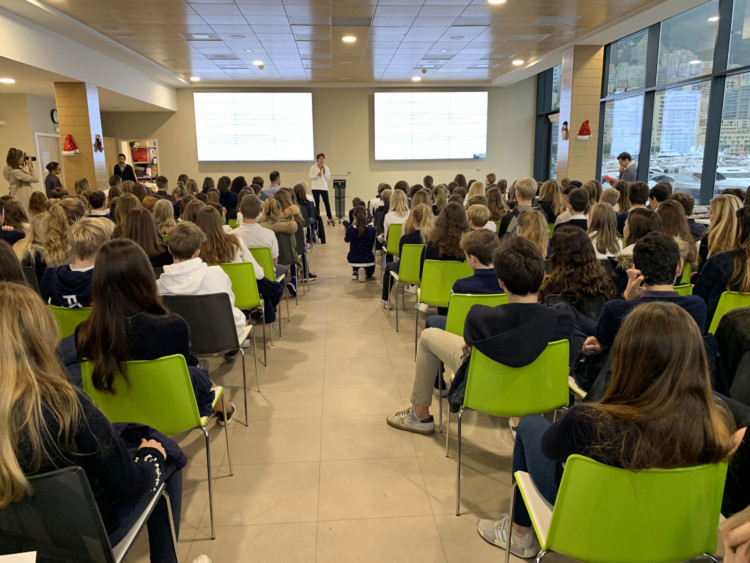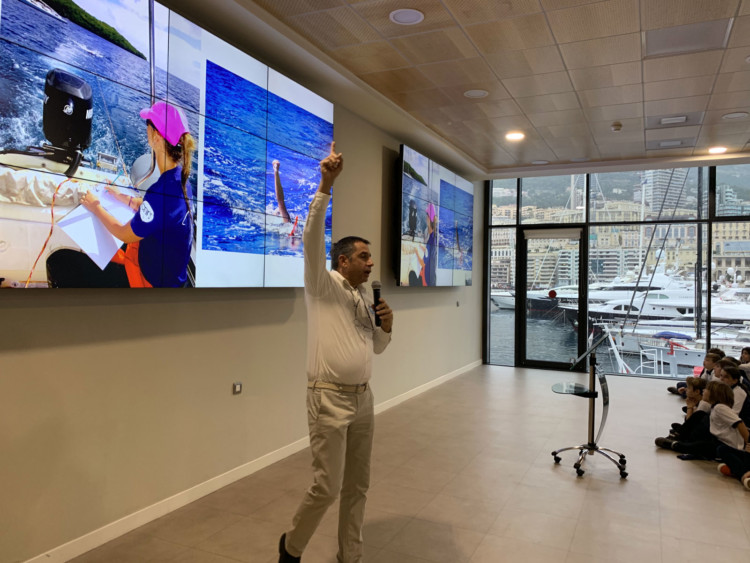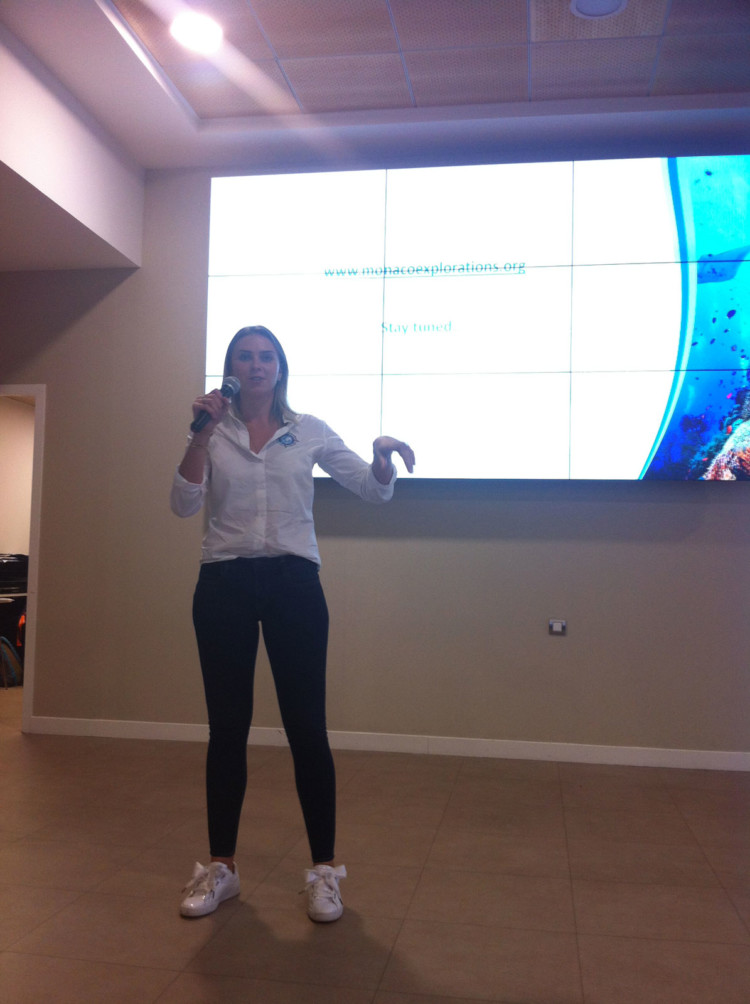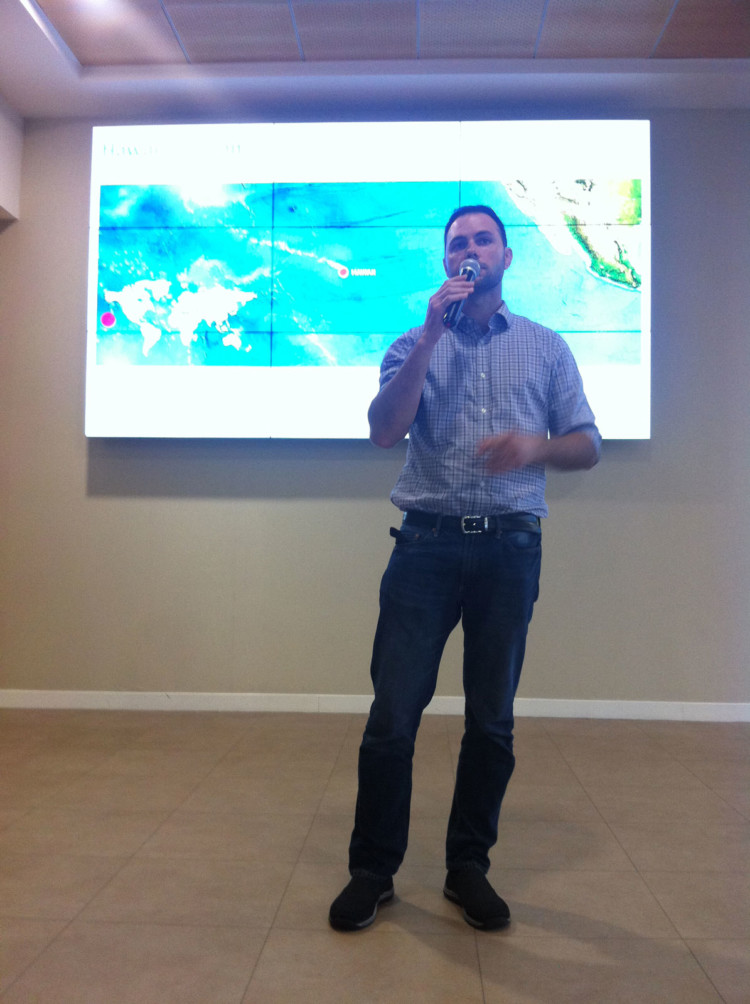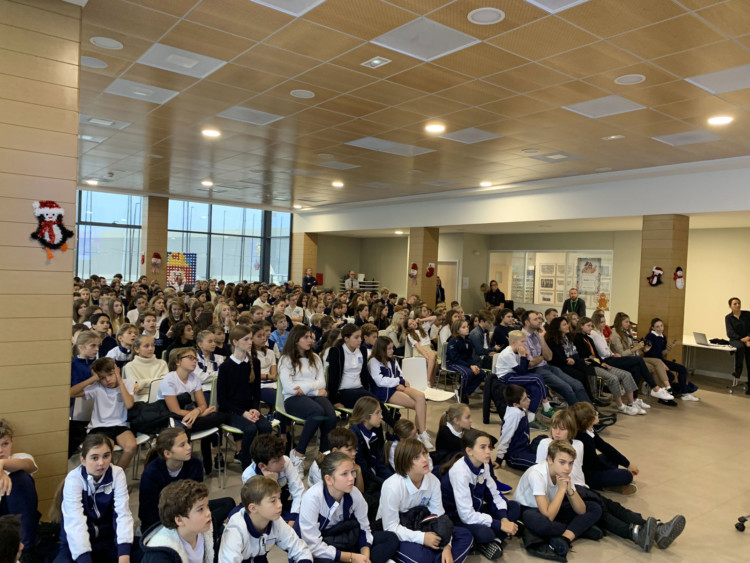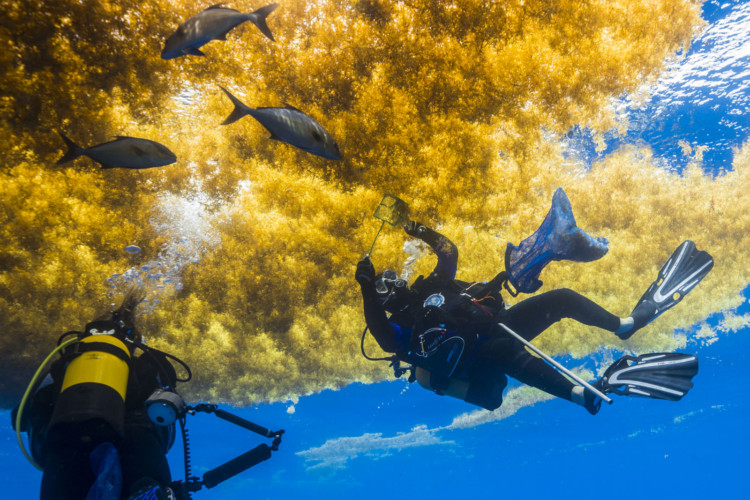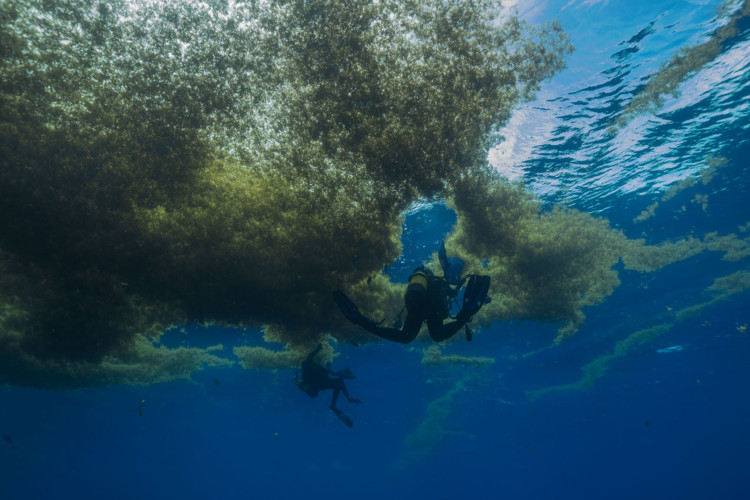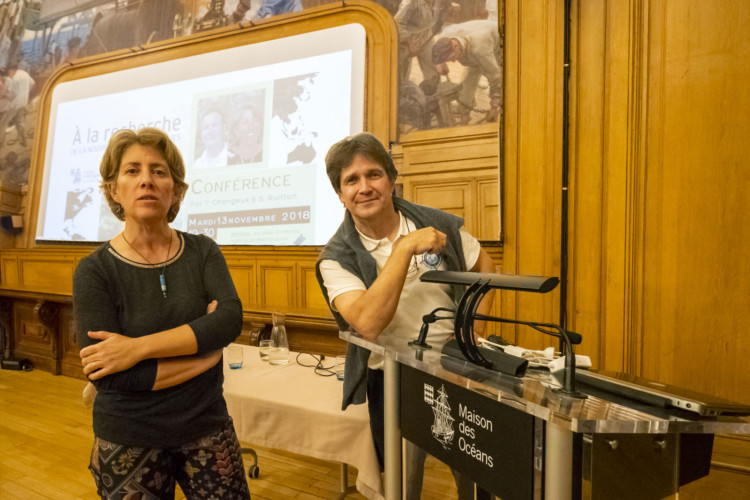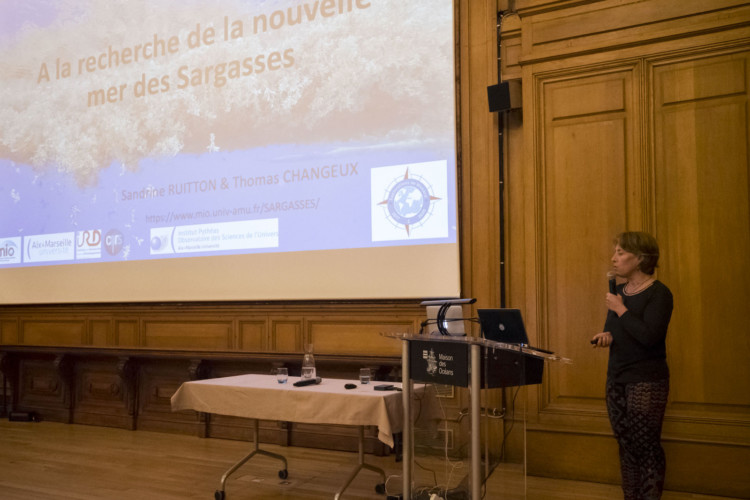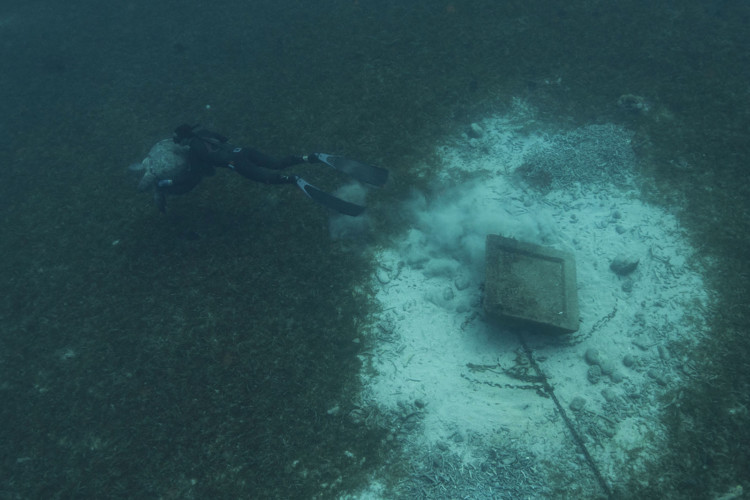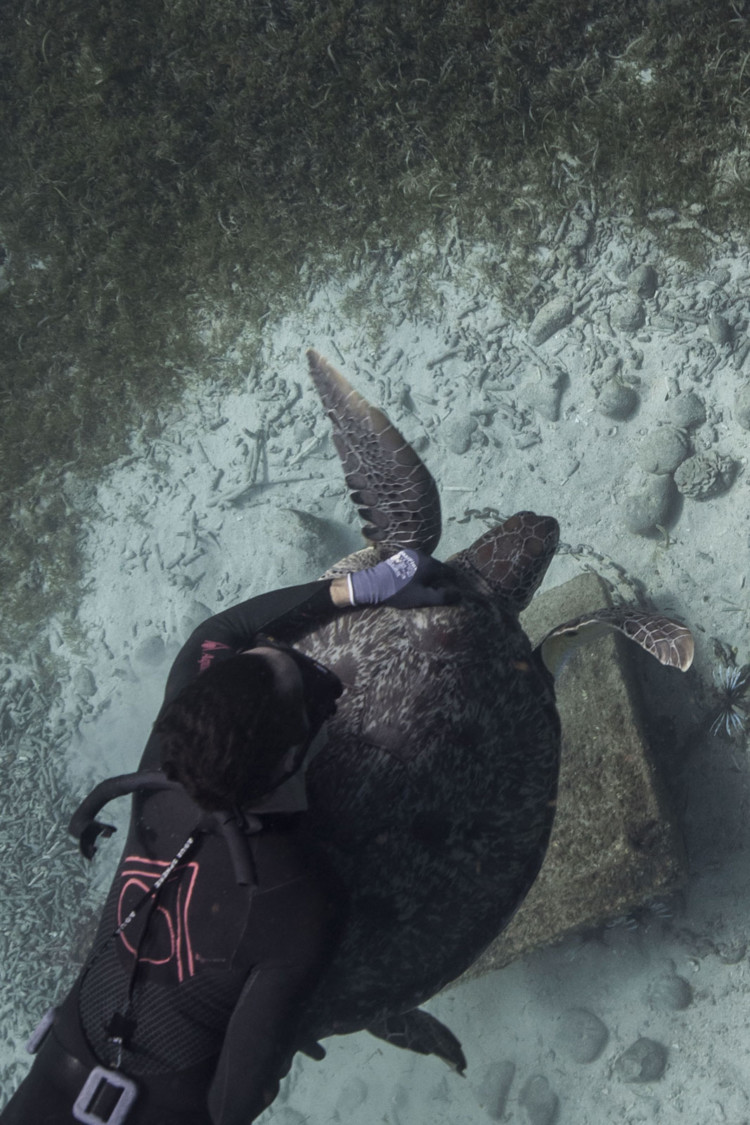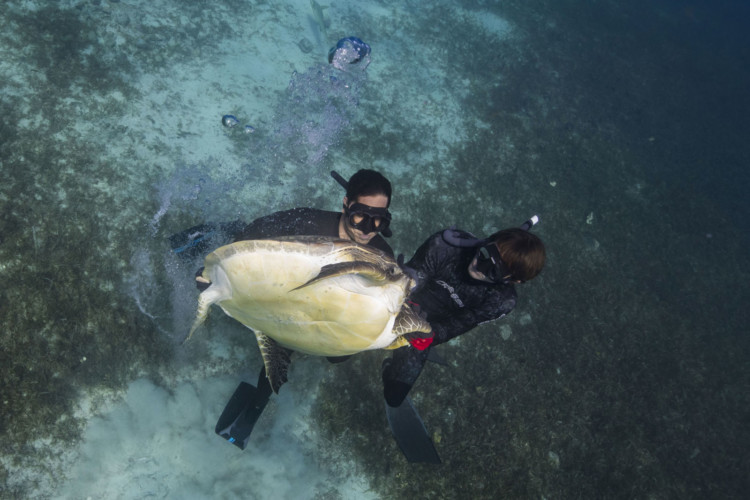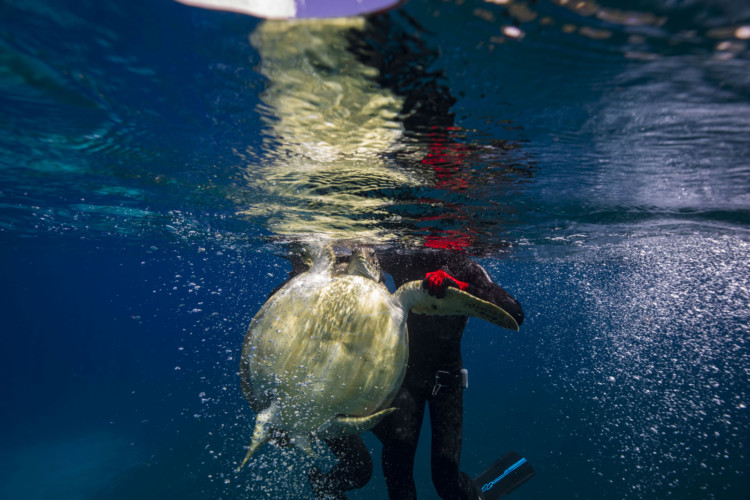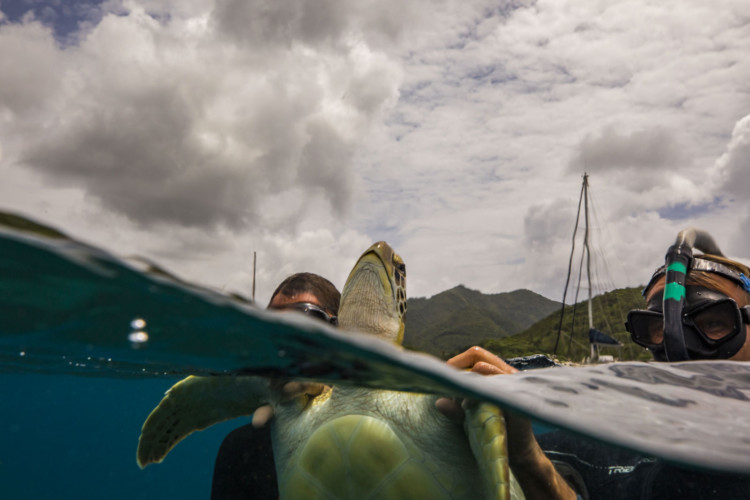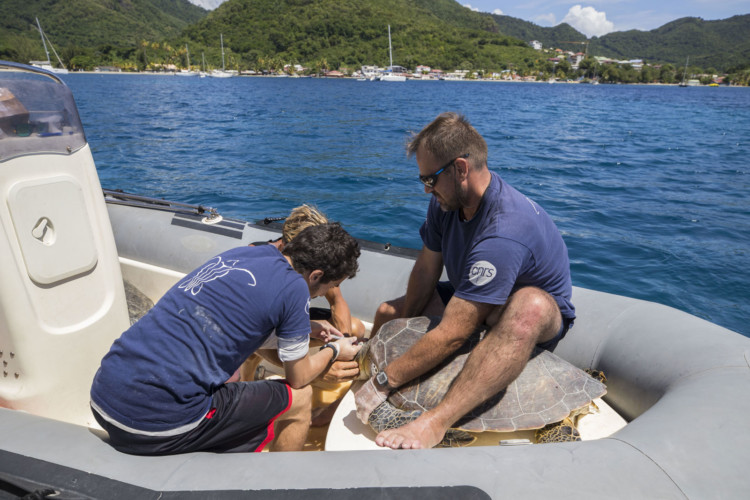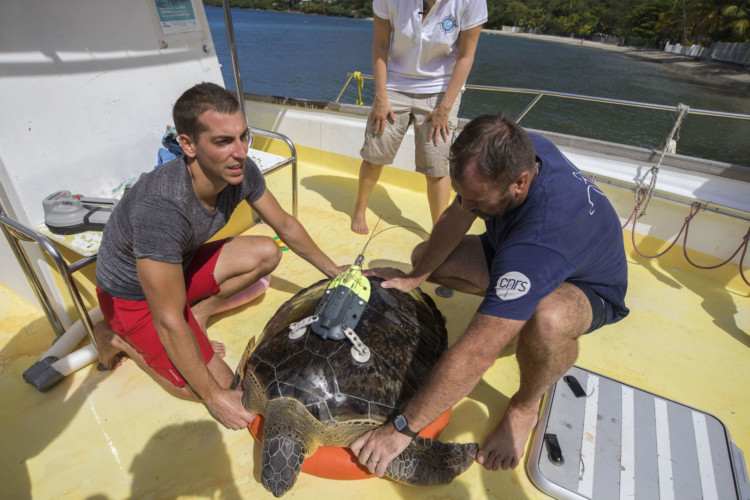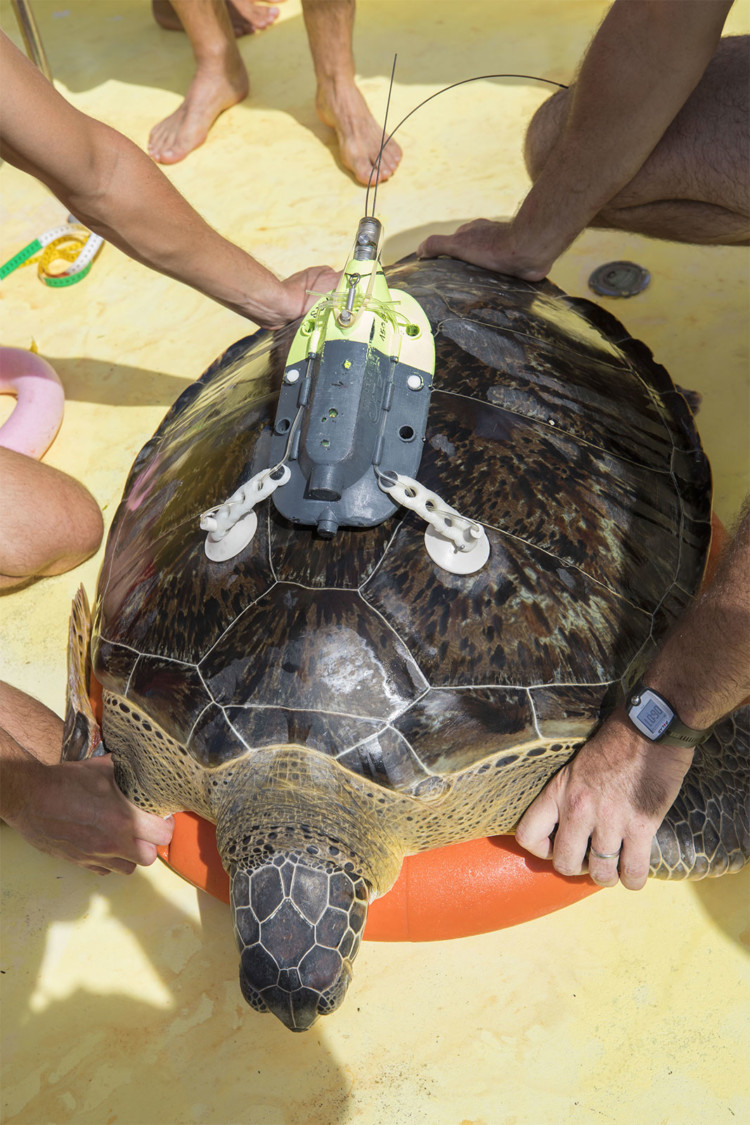This morning we were at the International School of Monaco with 230 students talking about our missions in Colombia, Martinique and Hawaii about sharks, turtles and corals. The youth of today are leaders and decision makers of the future. That’s why it’s so important to get them interested and engaged in environmental issues.
Researchers Thomas Changeux and Sandrine Ruitton from the Mediterranean Institute of Oceanography at Aix-Marseille University presented their research on Sargassum, a brown algae, at the Oceanographic Institute of Paris. The studies were carried out with the Monaco Explorations campaign on a mission crossing the Atlantic Ocean in October 2017. The research team is working to identify causes of the Sargassum proliferation, which, when it reaches shore can cause dramatic consequences for the water and air quality and health of shore communities.
Sea turtles have lived on this planet for 110 million years. They live in every ocean from warm, tropical waters to the bitter cold waters of the Arctic. There are seven species of sea turtles, all of which are on the International Union for the Conservation of Nature (IUCN) Red List of Threatened Species.
Sea turtle populations around the world have been drastically reduced due to habitat degradation, pollution, by-catch, consumption of turtle meat and eggs, and the sale of sea turtle shells.
Healthy oceans need sea turtles. Sea turtles are a “keystone species”, which means they are an important part of their environment and influence other species around them. If a keystone species is removed from a habitat, the natural order can be disrupted, which impacts other wildlife and fauna in different ways. Sea turtles are also an important asset at the economic level because of they generate attraction to tourists. Despite all of this, knowledge about the ecology of sea turtles is still quite poor. For all of these reasons, it is crucial that we better understand how sea turtles use marine resources during their life cycle in order to develop and implement more effective protective measures and threat mitigation measures.
Sea turtles are among the most impressive navigators in the animal kingdom because they follow migratory routes that sometimes cross entire ocean basins. Most sea turtle species can migrate considerable distances between their feeding grounds and their breeding and nesting areas. With the exception of the breeding season, when females lay their eggs on nesting beaches, it is difficult to observe marine turtles in their marine environment, especially since it may be thousands of miles away. The sea is an incredibly diverse and complex habitat and this results in unequal production of resources in space and time, and therefore in their dispersion. Because of this, it is a major challenge between oceanography and ecology to identify the factors that determine the marine distribution of sea turtles and to understand their feeding strategy in response to changing oceanographic conditions and climate variability.
Until recently, knowledge about how different marine turtle species evolve and feed in their dynamic environment was still rudimentary. But the development of space technologies and the constant progress in microelectronics and computers make it more possible to understand how sea turtles optimize their movements according to the location of their breeding sites and their food resources.
In this context, because they evolve in distinct ecological niches, the study of the feeding behavior of different marine turtle species will provide an ideal opportunity to explore how oceanographic processes stimulate and shape the marine environment and their trophic resources, and therefore condition the distribution and movement of sea turtles. This approach is made possible by equipping the turtles with miniaturized sensors allowing the simultaneous acquisition of detailed information on feeding behavior and the close environment.
